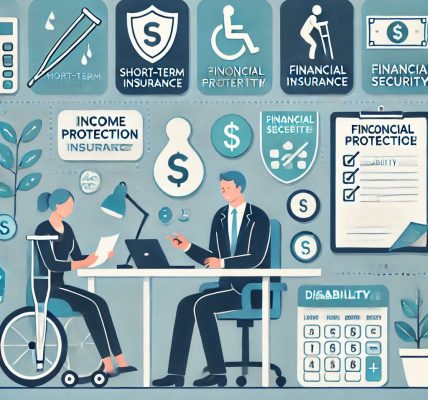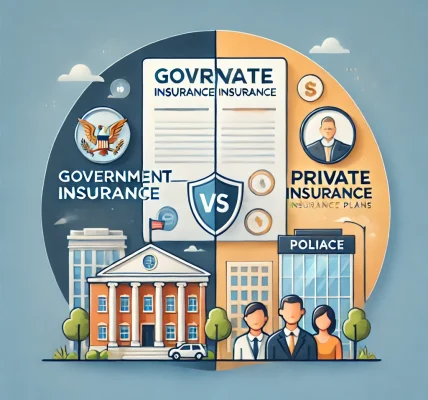Flooding is one of the most common and devastating natural disasters that can strike at any time, causing significant property damage, disrupting lives, and leading to financial hardship. In many areas, floods are not covered by standard homeowner’s insurance policies, which is why flood insurance is essential for homeowners, renters, and business owners in flood-prone regions. But with so many options available, how do you determine if you need flood insurance and how to choose the best coverage for your property?
In this blog post, we’ll explain what flood insurance is, how it works, and who should consider getting it. By the end of this guide, you’ll have a clearer understanding of flood insurance and whether it’s a necessary addition to your insurance portfolio.
What Is Flood Insurance?
Flood insurance is a specialized type of insurance policy designed to protect property owners from the financial impact of flood-related damages. Unlike standard homeowners or renters insurance, which typically does not cover flood damage, flood insurance specifically provides coverage for damage caused by water that inundates land and structures.
Flood insurance policies are generally available through the National Flood Insurance Program (NFIP), a government program managed by FEMA (Federal Emergency Management Agency), but there are also private insurers that offer flood insurance coverage.
How Does Flood Insurance Work?
Flood insurance covers two main types of property:
- Building Property Coverage: This covers the structure of your home, including the foundation, walls, and any permanent fixtures like plumbing and electrical systems. For renters, this includes the structure of the building they occupy. It also covers the cost of repairing or replacing damaged property, including flooring, walls, and appliances.
- Personal Property Coverage: This covers your belongings, such as furniture, clothing, electronics, and other personal items. This coverage may also extend to valuables like jewelry, artwork, and collectibles, depending on the policy.
Flood insurance policies usually have a deductible that you must pay before the insurance company begins to pay out. The amount of coverage you need will depend on the value of your property and the level of flood risk in your area.
What Does Flood Insurance Cover?
Flood insurance generally covers:
- Water Damage: Damage to your home or business caused by rising floodwaters, including structural damage and the destruction of personal property.
- Basements and Crawlspaces: Flood insurance can cover damage to items in basements, although certain items may not be covered unless specified (e.g., washers and dryers).
- Evacuation Costs: Some policies may cover evacuation expenses if a mandatory evacuation is ordered by local authorities due to flooding.
However, flood insurance typically does not cover:
- Damage from Moisture or Mold: If flooding leads to mold or mildew problems, these might not be covered unless it was part of the original flood damage.
- Temporary Housing Costs: You may need additional coverage for temporary housing expenses, as this is not typically covered under basic flood insurance.
- Flood Damage from Sewage Backups: If your flooding is the result of sewage backup or issues with drainage systems, this may not be covered by flood insurance.
It’s essential to review the specifics of your flood insurance policy to understand what is and isn’t covered.
Who Needs Flood Insurance?
While everyone living in a flood-prone area should consider flood insurance, it’s particularly important for the following individuals:
1. Homeowners in High-Risk Flood Zones
If you live in a designated flood zone, you are at a higher risk of experiencing flooding, especially during heavy rainfall, hurricanes, or storms. The Federal Emergency Management Agency (FEMA) creates flood maps that categorize flood risks into high-risk zones (A or V zones), moderate-risk zones (B or C zones), and low-risk zones (X zones).
- High-Risk Flood Zones (Zones A and V): If you live in a high-risk flood zone, flood insurance is often required by mortgage lenders. If you live in a zone with a high chance of flooding, it’s highly recommended that you get flood insurance to protect your property.
- Moderate to Low-Risk Zones (Zones B, C, and X): Even if you live in a lower-risk zone, floods can still occur, so flood insurance may be worth considering. In fact, around 25% of all flood insurance claims come from properties outside high-risk flood zones, so if you’re in a moderate or low-risk zone, you may still face risks, especially in the event of heavy rainfall, poor drainage systems, or unexpected weather patterns.
2. Renters
Renters in flood-prone areas should also consider purchasing flood insurance, as most renter’s policies do not cover flood-related damage. Flood insurance can help protect your personal belongings and provide compensation for lost or damaged items like furniture, electronics, and clothing.
3. Homeowners with High-Value Properties
If your home is located in a high-risk flood zone and you have significant investments in your property, flood insurance can protect you from catastrophic financial loss. Property owners with expensive real estate, valuable possessions, or heirlooms may want additional coverage for personal property to ensure they are adequately protected in case of a flood.
4. Business Owners
Businesses located in flood-prone areas should consider purchasing commercial flood insurance to protect their property and assets. Flood damage can devastate a business, leading to loss of inventory, equipment, and even the building itself. Commercial flood insurance can help prevent financial disaster by covering damages caused by floods and helping with recovery.
How to Determine Your Flood Risk
The first step in deciding whether to purchase flood insurance is to assess your flood risk. Here are a few ways to determine your risk level:
- Check FEMA Flood Maps: FEMA provides flood zone maps to show the flood risks in your area. You can check these maps online to determine whether your property is in a high-risk flood zone. These maps are updated regularly, so it’s important to stay informed.
- Consider Local History: If your area has experienced flooding in the past or is prone to seasonal heavy rainfall, you may be at risk, even if you’re not in a high-risk flood zone.
- Talk to an Insurance Agent: Your insurance agent can help you assess your flood risk and recommend the right level of coverage for your home or business.
How Much Does Flood Insurance Cost?
The cost of flood insurance depends on several factors, including:
- Your Location: Homes in high-risk flood zones will pay higher premiums than those in low-risk areas.
- The Value of Your Property: More expensive homes or businesses will require higher coverage limits and will generally have higher premiums.
- Deductibles: Policies with higher deductibles may cost less, but keep in mind that you’ll need to pay more out-of-pocket in case of a claim.
- Coverage Limits: The amount of coverage you choose will impact your premium. Higher coverage means higher premiums.
On average, flood insurance costs between $500 and $1,500 annually, but this can vary significantly based on your risk level.
Conclusion
Flood insurance is an essential form of protection, especially for those living in flood-prone areas or owning valuable property. Even if you’re in a moderate or low-risk zone, floods can still happen, and the damage they cause can be devastating. Purchasing flood insurance provides peace of mind and safeguards your home, belongings, and business from the financial fallout of a flood.




